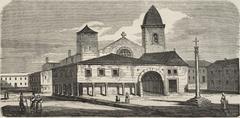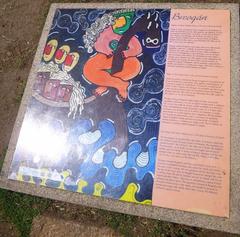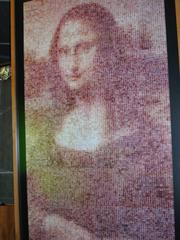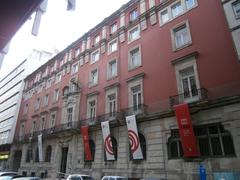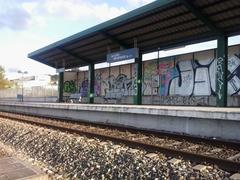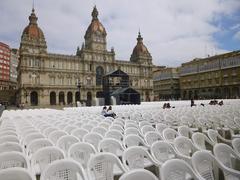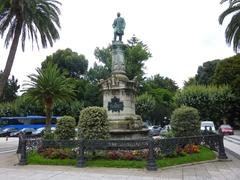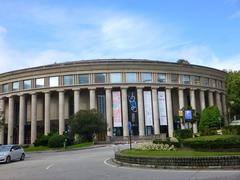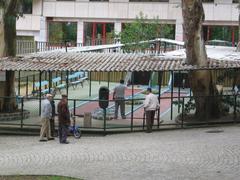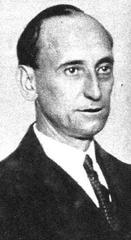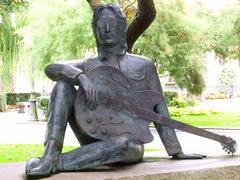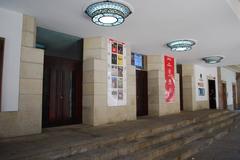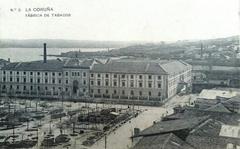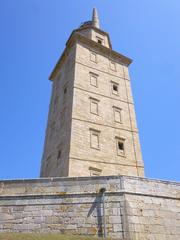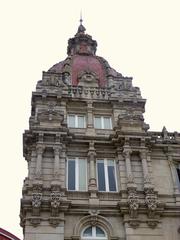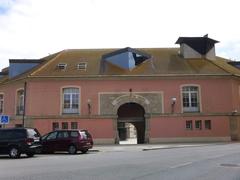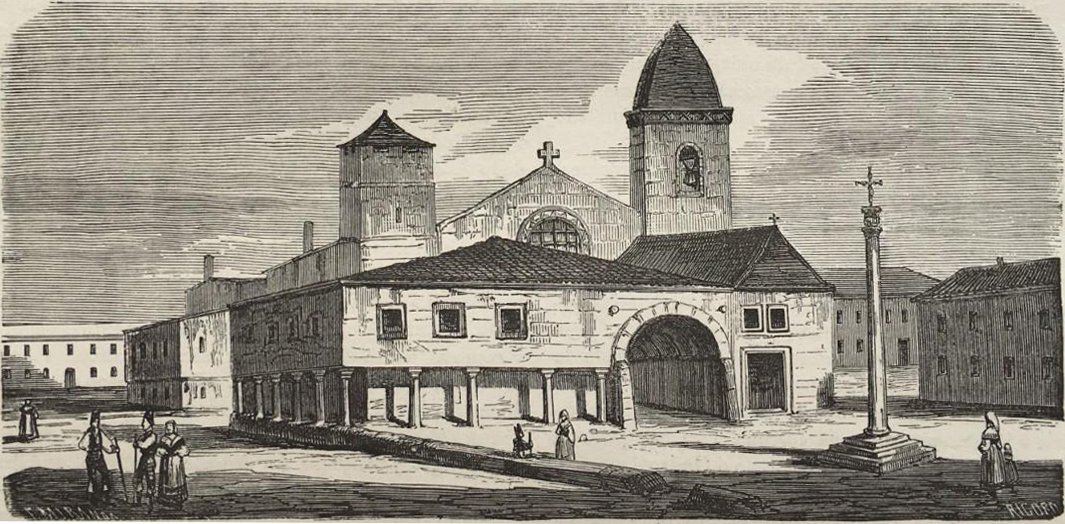
Real Colexiata de Santa María do Campo: Visiting Hours, Tickets, and Historical Guide in A Coruña
Date: 15/06/2025
Introduction
Nestled within the medieval heart of A Coruña, Galicia, the Real Colexiata de Santa María do Campo stands as a monument to centuries of religious devotion, maritime heritage, and architectural evolution. Also known as Santa María do Mar, this church has witnessed the transformation of A Coruña from a medieval port town to a vibrant cultural city. Founded in the late 12th century, the Colexiata’s Romanesque roots and later Gothic additions reflect the artistic and social development of the city. Traditionally, it has served as the spiritual home for the city’s seafaring community, cementing its significance for generations of locals and visitors alike (Wikipedia; Ayuntamiento de A Coruña).
Declared a Bien de Interés Cultural in 1931, the Colexiata is not only a religious landmark but also a symbol of civic identity and resilience. Its ongoing restoration and preservation efforts ensure that both the church and its attached museum—home to priceless religious artifacts—remain accessible to all. This guide offers comprehensive information about the church’s history, architectural highlights, visiting hours, ticketing, accessibility, tours, and nearby attractions to help you plan a meaningful visit.
Table of Contents
- Introduction
- Historical Overview
- Architectural Highlights
- Maritime and Social Significance
- Visiting Information
- Events and Special Services
- Nearby Attractions and Travel Tips
- FAQ
- Conclusion and Practical Tips
- References
Historical Overview
Origins and Development
The Real Colexiata de Santa María do Campo was established in the late 12th century, with the earliest records dating to around 1150 (Wikipedia). Its name, “do Campo” (“of the field”), reflects its original location outside the city’s fortified walls, serving the maritime and artisanal communities who lived beyond the urban core. Constructed in the Romanesque style, the church featured sturdy stonework, semicircular arches, and a basilical layout with three naves.
Medieval Expansion and Ecclesiastical Status
The church’s importance grew rapidly. In 1256, King Alfonso X “El Sabio” granted it parish status. A significant expansion between 1302 and 1317 completed its three naves, further solidifying its role as a community hub. In 1441, it was elevated to collegiate church status, confirmed by Pope Eugene IV in 1443, granting it both prestige and autonomy (Ayuntamiento de A Coruña).
Architectural Highlights
Exterior and Façade
The church is a showcase of Romanesque architecture with later Gothic influences. Its main façade, facing the Cornide Palace, features a 15th-century ogival rose window and an elaborately carved tympanum depicting the Epiphany (Arteguias). Side portals display sculptures of Saint Catherine and possibly the Apostle James. The 15th-century bell tower and an ancient stone cross (cruceiro) at the entrance add to its distinctive appearance (Spain.info).
Interior and Artistic Details
Inside, three naves of five bays each are supported by columns with carved capitals and pointed arches, blending Romanesque and Gothic elements (Explorial). The main altar, richly decorated, honors the Virgin Mary. Notable features include medieval tombs, polychrome stone sculptures, and stained-glass windows that cast colorful light throughout the space. The adjoining Religious Art Museum houses a gilded silver monstrance by Johann Joachim Lutz I and other sacred art (Wikipedia).
Maritime and Social Significance
Throughout its history, the Colexiata has been closely linked to A Coruña’s maritime community. Known as the church of the “mareantes” (seafarers), it served as a place where sailors and navigators would give thanks for safe voyages. Its cultural and social role is further evidenced by its function as a burial site for notable local families and by its continued use for Mass and community gatherings (Ayuntamiento de A Coruña).
Visiting Information
Location and Accessibility
- Address: Rúa Damas 24 / Rúa Santa María 3, 15001 A Coruña, Spain
- Getting There: In the heart of A Coruña’s Old Town, the church is accessible by foot, public bus (lines 1, 1A, 2, 3, 7), or car (parking at María Pita or Plaza de España within a 10-minute walk) (Mapcarta).
- Accessibility: The main entrance is accessible by ramp; some interior areas have uneven flooring, so visitors with mobility challenges may require assistance.
Opening Hours and Tickets
- Monday to Saturday: 10:00 AM – 1:30 PM, 5:00 PM – 7:30 PM
- Sunday and Holidays: 11:00 AM – 1:30 PM
- Admission: Free; donations are encouraged. Guided tours and museum access may require a small fee (€2–€5). Check the official tourism website for the latest information.
Guided Tours and Museum Access
- Guided tours explore the church’s history, architecture, and religious artifacts. Available in Spanish, Galician, and English (peak season).
- The Religious Art Museum displays medieval manuscripts, liturgical objects, and religious artworks.
- Advance booking is recommended for groups (A Coruña tourism office).
Dress Code and Visitor Etiquette
- Dress modestly (shoulders and knees covered).
- Hats should be removed inside.
- Photography without flash is allowed, except during services or in restricted areas.
- Maintain silence during Mass or prayer times.
Facilities and Amenities
- No public restrooms inside; nearby cafés and restaurants offer facilities to customers.
- ATMs, souvenir shops, and tourist information are located at Plaza de María Pita (300 meters away).
- The main entrance is at street level, but some interior areas may require assistance for wheelchair users.
Events and Special Services
- Feast of the Assumption (August 15): Features processions and special Masses.
- Holy Week (Semana Santa): Includes processions and ceremonies.
- Concerts and exhibitions are occasionally held in the church.
- For current events, see the A Coruña tourism calendar.
Nearby Attractions and Travel Tips
- María Pita House Museum: Celebrates the city’s heroine.
- Royal Galician Academy: Important cultural institution.
- A Pescaría: Historic area with bars and eateries.
- Monte Alto: Offers stunning Atlantic views.
- Other nearby sites: Tower of Hercules, Old City Walls, Plaza de María Pita, Igrexa de Santiago, Convento de Santo Domingo (Spain.info; Viajargalicia).
Travel Tip: Wear comfortable shoes (cobbled streets), and visit in the early morning or late afternoon for a quieter experience.
Frequently Asked Questions (FAQ)
Is there an entrance fee?
Admission is free; donations are appreciated. Guided tours may have a small fee.
Are guided tours available in English?
Yes, especially during peak tourist seasons.
Is the church wheelchair accessible?
The main entrance is accessible, but some interior areas may require assistance.
Can I take photographs inside?
Photography without flash is generally allowed, except during services or in restricted areas.
Are public restrooms available?
No, but facilities are available in nearby cafés and restaurants.
Conclusion and Practical Tips
The Real Colexiata de Santa María do Campo is a must-see for anyone visiting A Coruña. Its rich Romanesque and Gothic architecture, maritime heritage, and vibrant community role make it a unique cultural landmark. With accessible visiting hours, free admission, and guided tours, it offers a rewarding and educational experience for all. Enhance your trip with related sites in the Old Town, and consider downloading the Audiala app for guided tours and travel tips.
Plan your visit, respect the site’s spiritual character, and immerse yourself in the enduring legacy of A Coruña’s most iconic church.
References
- Wikipedia
- Ayuntamiento de A Coruña
- Arteguias
- Explorial
- Galicia Maxica
- Spain.info
- Viajargalicia
- Galician Wikipedia
- Colexiata Official Site
- MyCityHunt
- Galicia Pueblo a Pueblo
- Mapcarta
- A Coruña Tourism
